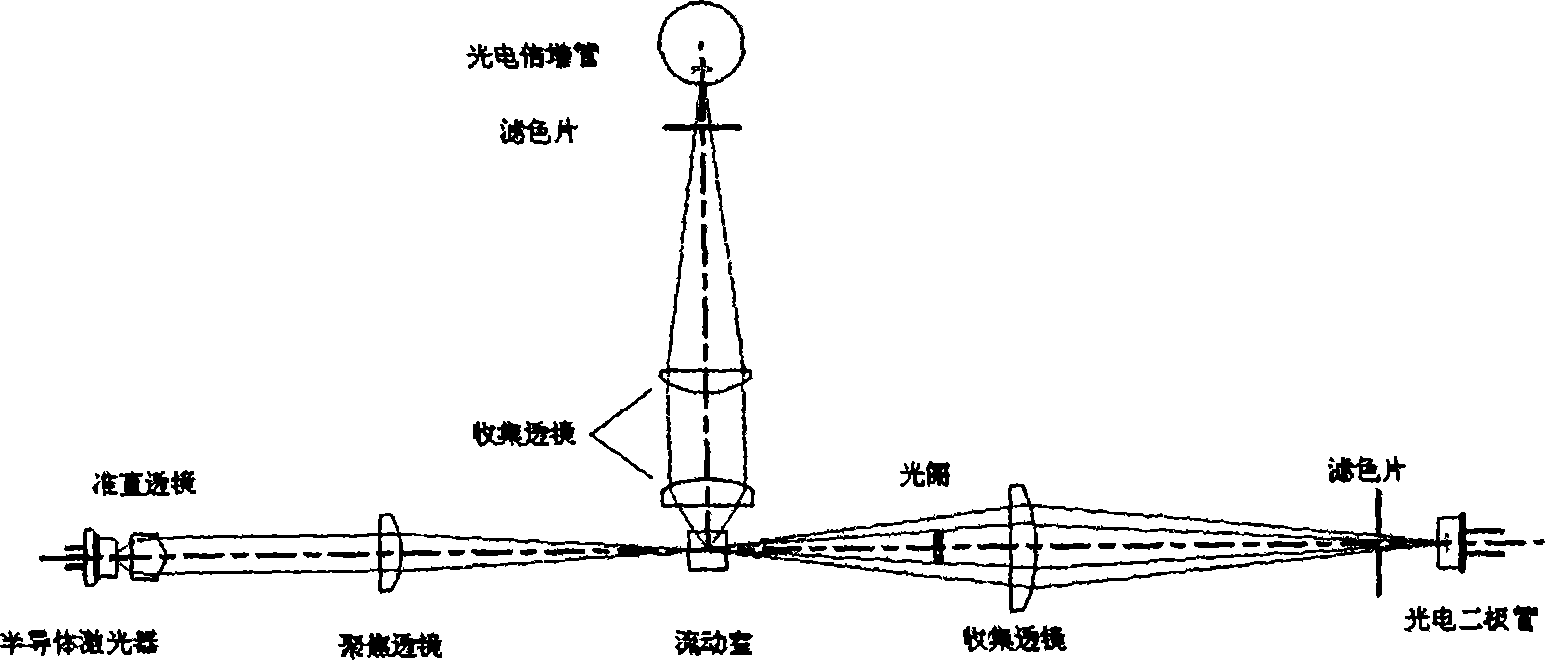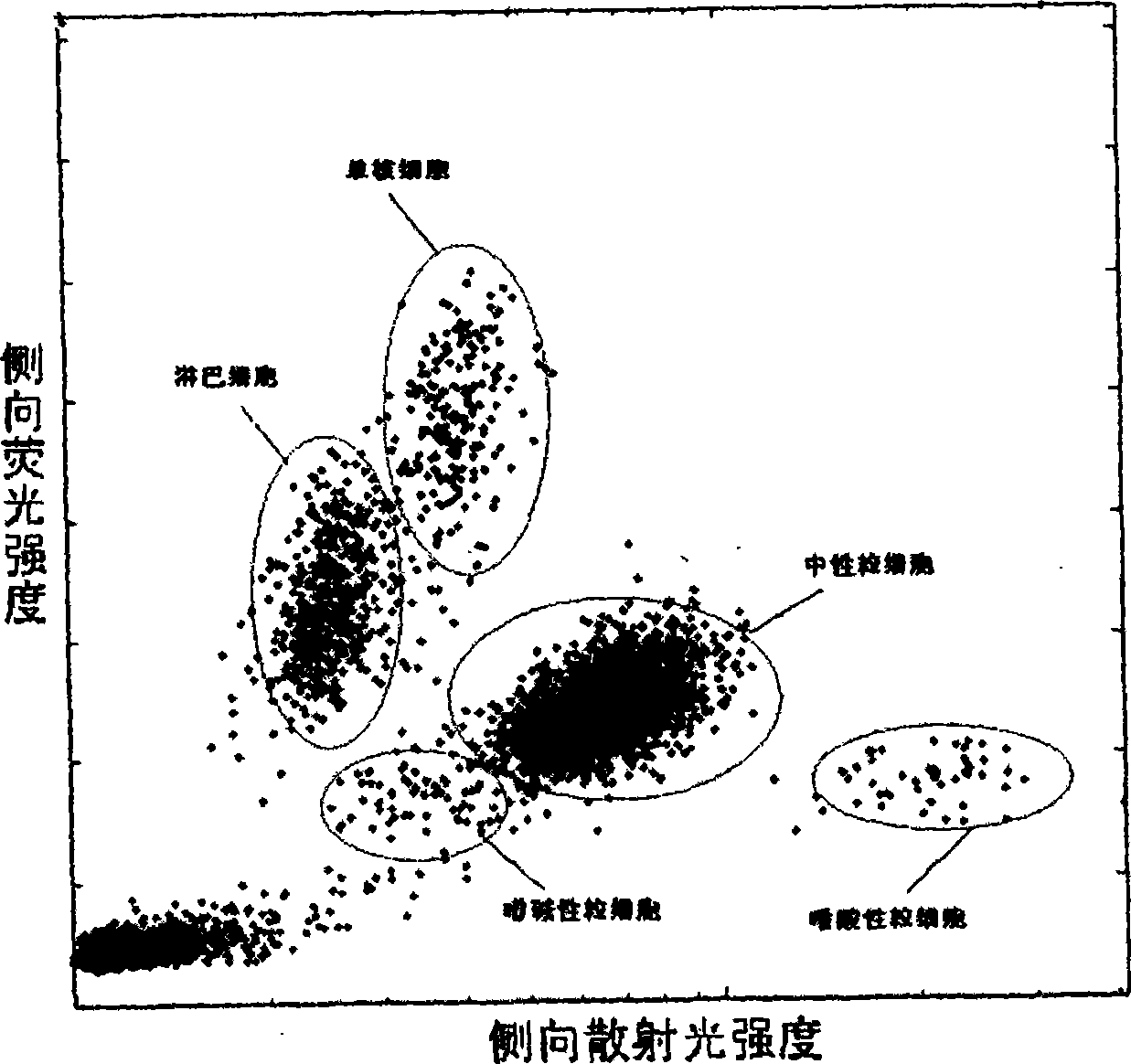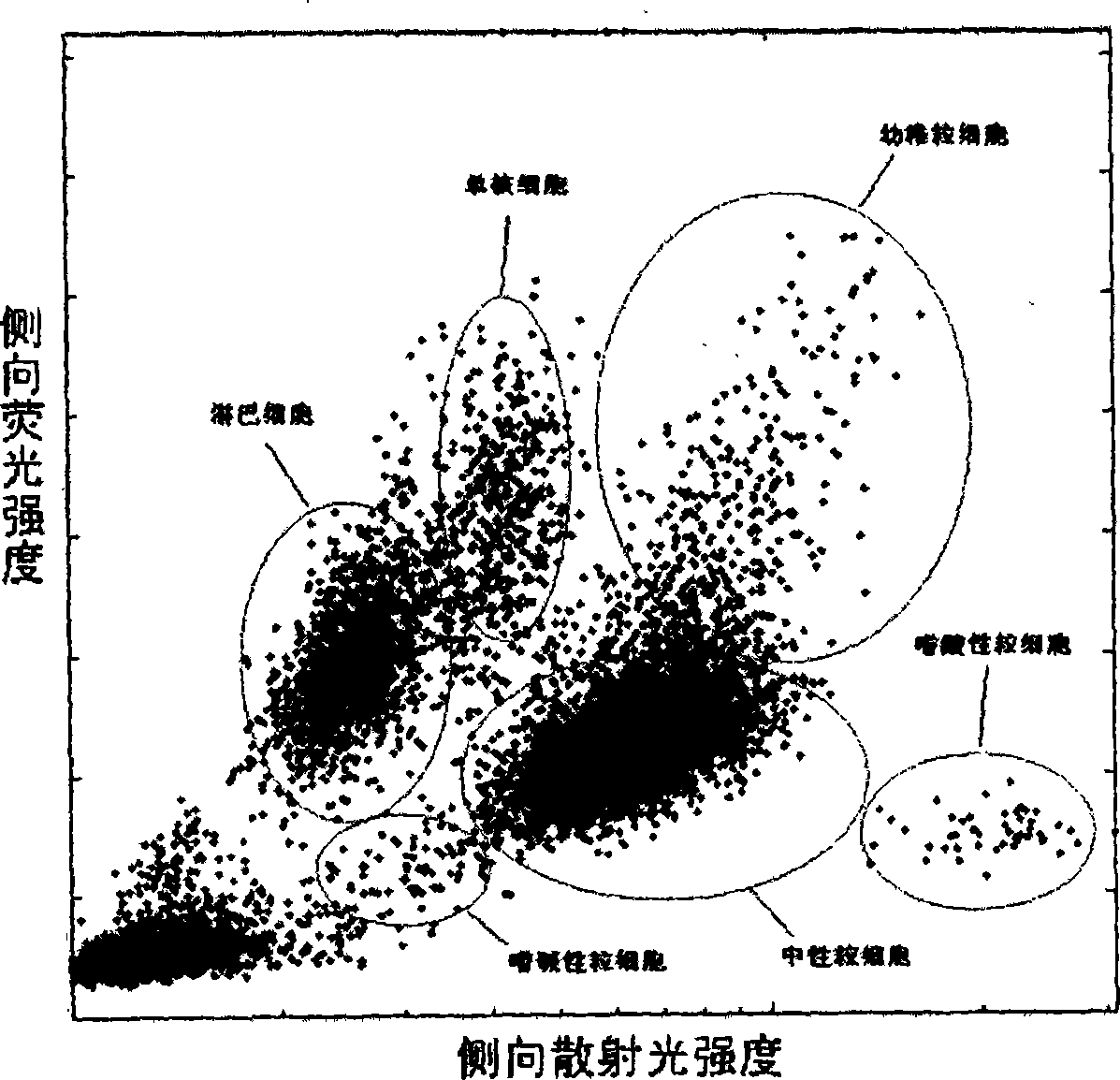Differential blood count reagent, kit and method of differential blood count
A white blood cell classification and reagent technology, applied in chemical instruments and methods, biochemical equipment and methods, analytical materials, etc., can solve the problems of inability to classify white blood cells into five categories, and achieve the effects of wide application range, low ambient temperature, and instrument cost saving
- Summary
- Abstract
- Description
- Claims
- Application Information
AI Technical Summary
Problems solved by technology
Method used
Image
Examples
preparation example Construction
[0211] Preparation method of white blood cell differential counting reagent
[0212] The invention discloses a preparation method of a white blood cell differential counting reagent. The method comprises: dissolving the reagent components of any embodiment of the invention in water to form a single-component reagent system; or dissolving the cyanine cationic compound therein. In an organic solvent, other components are dissolved in water to become a reagent system with more than two reagent components. For the organic solvent, as long as it can fully dissolve the cyanine-type cationic compound and have a certain solubility in water, there are no other special restrictions. Common organic solvents such as methanol, ethanol, ethylene glycol, glycerin, dimethyl Sulfoxide and the like are acceptable.
[0213] Differential counting of white blood cells
[0214] Another aspect of the present invention provides a method for classifying and counting leukocytes, said method comprisin...
Embodiment 1
[0230] Reagent A for differential counting of leukocytes was prepared as follows, which consisted of the following components:
[0231] The compound of the above structural formula A 0.5ppm
[0232] Decylisoquinolinium bromide 0.4g / L
[0233] Lauryl alcohol polyoxyethylene (23) ether 1.3g / L
[0234] Sodium Benzoate 2.0g / L
[0235] Methanol 50g / L
[0236] Sodium dihydrogen phosphate 3g / L
[0237] Disodium hydrogen phosphate 4.8g / L
[0238] Add 20 μl of fresh anticoagulated blood to 1 ml of reagent A above, mix for 25 seconds while maintaining the temperature at 25°C, and then use laser flow cytometry (light source: red semiconductor laser, wavelength 640nm) to detect leukocytes. The fluorescence intensity information of the cells is measured by using the side fluorescence at a measuring angle of 90 degrees, and the side scattered light intensity information of the cells is measured by using the side scattered light at a measuring angle of 90 degrees. The result is as fi...
Embodiment 2
[0240] Reagent B for Leukocyte Differentiation was formulated as follows, consisting of the following components:
[0241] The compound of the above structural formula B 0.5ppm
[0242] Tetradecylquinolinium bromide 0.1g / L
[0243] Cetyl alcohol polyoxyethylene (25) ether 1.5g / L
[0244] Benzenesulfonic acid 2.0g / L
[0245] Tris 1.2g / L
[0246] The pH was adjusted to 7.0 with hydrochloric acid.
[0247] Take a fresh anticoagulated blood sample with high immature granulocytes (IG) (microscopic examination result IG% is 2.5%), add 20 μl of the blood sample to 1ml of reagent B above, and mix under the condition that the temperature is kept at 45°C After 15 seconds, leukocytes were detected by laser flow cytometry (light source: red semiconductor laser, wavelength 640nm). The fluorescence information of the cells is measured by using the side fluorescence at a measuring angle of 90 degrees, and the side scattered light information of the cells is measured by using the side sc...
PUM
| Property | Measurement | Unit |
|---|---|---|
| osmolarity | aaaaa | aaaaa |
Abstract
Description
Claims
Application Information
 Login to View More
Login to View More - R&D
- Intellectual Property
- Life Sciences
- Materials
- Tech Scout
- Unparalleled Data Quality
- Higher Quality Content
- 60% Fewer Hallucinations
Browse by: Latest US Patents, China's latest patents, Technical Efficacy Thesaurus, Application Domain, Technology Topic, Popular Technical Reports.
© 2025 PatSnap. All rights reserved.Legal|Privacy policy|Modern Slavery Act Transparency Statement|Sitemap|About US| Contact US: help@patsnap.com



